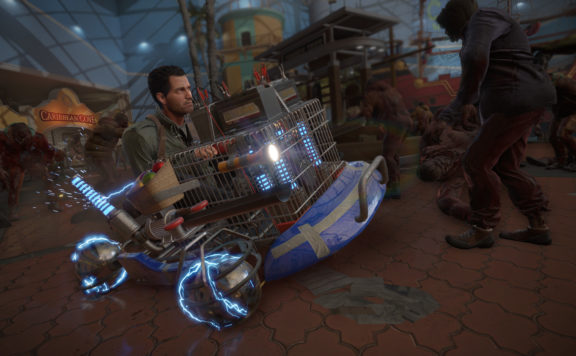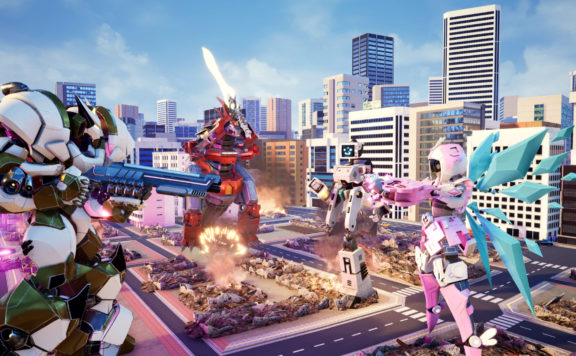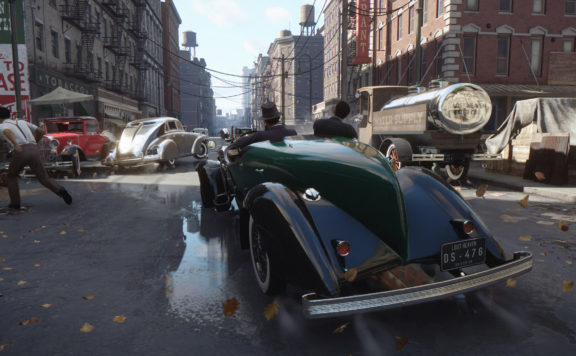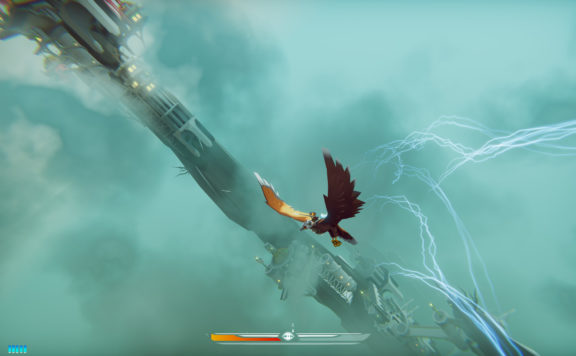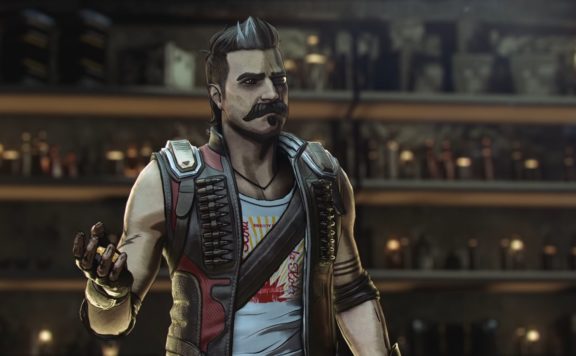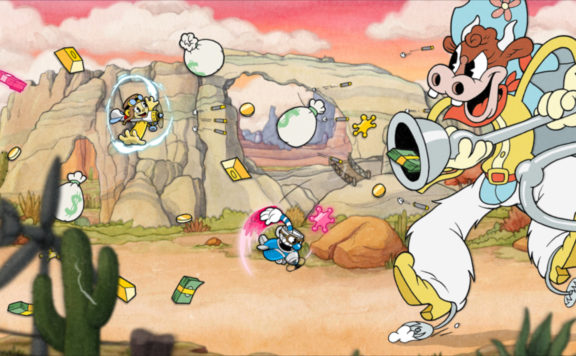STATIONFlow is a brand new strategy management game from DMM Games. Unlike some of DMM’s previous excursions to high school rock bands, this adventure is set to start in a subway station platform. We jumped at the chance to get on board with a STATIONFlow interview and talked to Szabó Marcell and Tak Fujii about the game as it looks to locomotive up the Steam charts after a full launch last week.
Why Trains?

Producer Tak Fujii
When you look at the work that Tak and DMM have pushed out in the past, STATIONFlow is a deeply different type of game, from the visual style to its strategic elements so the first question to both Szabó and Tak was, why?
According to producer Tak, “Really we wanted to make something different. You might call us the Research and Development department. DMM Games is one of the biggest games development companies in Japan and while we have a lot of PC based browser games, for example, this is totally different. With Gal Metal we had an opportunity to build a new audience on a new platform. With STATIONFlow, this title is developed by DMM Games especially to appeal to a more western audience than our other games. It’s a new challenge, something different from the games that exist form DMM right now. That is our mission with STATIONFlow, to find a new audience that will like the games we make”

Game Director Szabó Marcell
Szabó Marcell, the game’s director, is not a Japanese native and coming from a different neighborhood, it gave him a very distinct point of view when crafting the type of game that might play well on western shores. “Much of the inspiration for this came from my own Japanese Subway experience. I live in Tokyo which has a huge subway station and some of the actual stations get incredibly complicated. You have stations where 5 or 6 subway lines meet in one place and people have to go form one to the other. For me where I grew up in Hungary where we don’t have stations that are that big it made an impression. I saw the signs and systems in place and noticed the way these stations manage the flow of a huge amount of people. I started to notice that people flow like fluid dynamics. I thought that would be a cool idea to explore. That’s where the idea came from.”
GAMESPACE: What sort of games inspired you to make this?
“Since childhood, I’ve played transport tycoon and Rollercoaster tycoon, and I’m a massive fan of management games. I must have something like 500 hours in Prison Architect and more recently I’ve been playing Cities Skyline a lot. I think many of these had a hand in inspiring the game. Clearly Mini Metro is something of visual inspiration for STATIONFlow. In train stations in Tokyo, you get maps that allow you to navigate the station. A lot of the stations are complex and three dimensional so those charts have a similar visual style that I was aiming for with STATIONFlow.”
Tak and DMM clearly have a similar perspective on the evolution of STATIONFlow. Thinking along the same lines, Tak pointed out the layout of Shibuya Station to us during our conversation, marveling at how the whole thing crosses and interacts in a way that must make some kind of sense to somebody.
“In Shibuya, we have a huge Station and if you check out the map you can start at the top and all the lines are just criss crossing like crazy. There seem to be stairs everywhere and STATIONFlow gives the player the opportunity to make it better”
It’s certainly reasonable that anybody working within DMM Games might understand this concept. After all, Tokyo’s Shinjuku station is such a massive sprawling avenue of corridors that it has its own urban legend. Legend has it that if you head down the wrong corridor is too much of a hurry there are routes you’ll never return from.

shibuya station
Visual Impact
Thankfully, STATIONFlow is a much safer take on that idea and we didn’t spot any lost ghouls in this particular train station. Players that get to dive into STATIONFlow aren’t likely to be met with the same sort of character as Tokyo Dark’s tale of lost urban legends. Instead, the team behind this strategic ride took a very clean approach to the visual style. This might seem off-putting at first but really makes sense when you dig into the reasons behind it.
“Certainly in terms of visual inspiration and the 2D stuff we were inspired by actual signage or actual information boards, things that you might see in a train station which are all fairly colorful, but also very simple. There’s not like a lot of shading on them or anything like that?”, confirmed Szabó.
“for the 3D part of the inspiration was the max I just mentioned. And then partly we kind of wanted to go for, I guess, sort of like a board game-like style, especially with the passengers who are basically just like, solid models. The idea there was that, especially if there’s going to be so many people, it makes more sense to just kind of keep it very simple.”

That does bear out when the game develops. With a huge amount of freedom comes the challenge to get everyone from A to B. It’s this freedom that definitely forms part of the game’s challenge. While the visuals don’t get in the way of the core components player decisions are vital. When the two ideas of busy subway lines and player freedom come into effect that visual design choice plays on in STATIONFlow.
“That’s actually why for example with passengers we went for kind of a single color coding for each passenger Tide. Because if it’s a really big crowd, that makes distinguishing people a lot easier than if they were all like five colors or something like that and of course very simple, there are technical and resource considerations as well. So that’s always part of it.” – Szabó
Of course, these design elements didn’t all come straight away and building a station is not exactly easy. STATIONFlow launched as an Early Access title on Steam, and the team behind the title came out with an understanding that some things did need to be tweaked.
“So we basically decided to go for Early Access to test the waters and gauge player’s reactions. Also, it provided an opportunity to get feedback on the features that players really like and want. We ended up putting in a bunch of stuff in Early Access that players were requesting and complaining about. One thing, in particular, that was added was the ability to color-code passengers based on their needs. This, for example, allowed players to see everyone that needs a vending machine or a bathroom. Originally we didn’t have that in-game and the only way you knew something wasn’t optimal was when you had a passenger complaining about it. The feedback we got was that this was really hard to notice where these people are coming from or where needs help, so we found that Early Access really worked for that. It really helped us develop and polish the game by putting a more or less feature complete title into Early Access”

That isn’t the only thing that Early Access brought to STATIONFlow, the diversity of game types changed, allowing room for players that want to go full steam ahead and build manically or even who want to methodically plan for success from day zero. To allow such a serious range of players the game’s map editor appears to be crucial, allowing players to produce their own stations, each with its own set of particular challenges forms the off.
“One of the biggest things we did in Early Access was the map editor. From the start, Tak was really pushing for this. Initially, we only launched with the one map and my plan was to hand make a few extras and call it a day but eventually we decided it would be a lot cooler if players could make their own maps.”, said Szabó. “The intent was to give the game a lot more depth and a lot more replayability as people post their own interesting content on the Steam Workshop and share that content. As long as people are making maps, there’s so much more to do and so many more challenges than we could produce on our own.”
It’s not just the breadth of content that allows for this diversity of gameplay. As stations level up and get busier the dynamics of crashing waves of people into a station changes and the plans or reactions of station managers come to fruition. The freedom that the game provides to players is incredibly important to this according to Szabó. “I’ve seen since we started Early Access that people want to build in very different ways. Some people go for efficiency, some people go for symmetry and the grid-based build system and the freedom it provides makes for a more interesting game than if there was just one solution to every station. When we were designing the maps we weren’t thinking of it in terms of having a solution that works one way. Designing the game, it was very much about laying the train tracks in interesting patterns and seeing what develops from that. “
While I sat pondering the implications of letting a psychologist loose on the virtual rails you can find out if we enjoyed our own ride. Check out our STATIONFlow review now.


